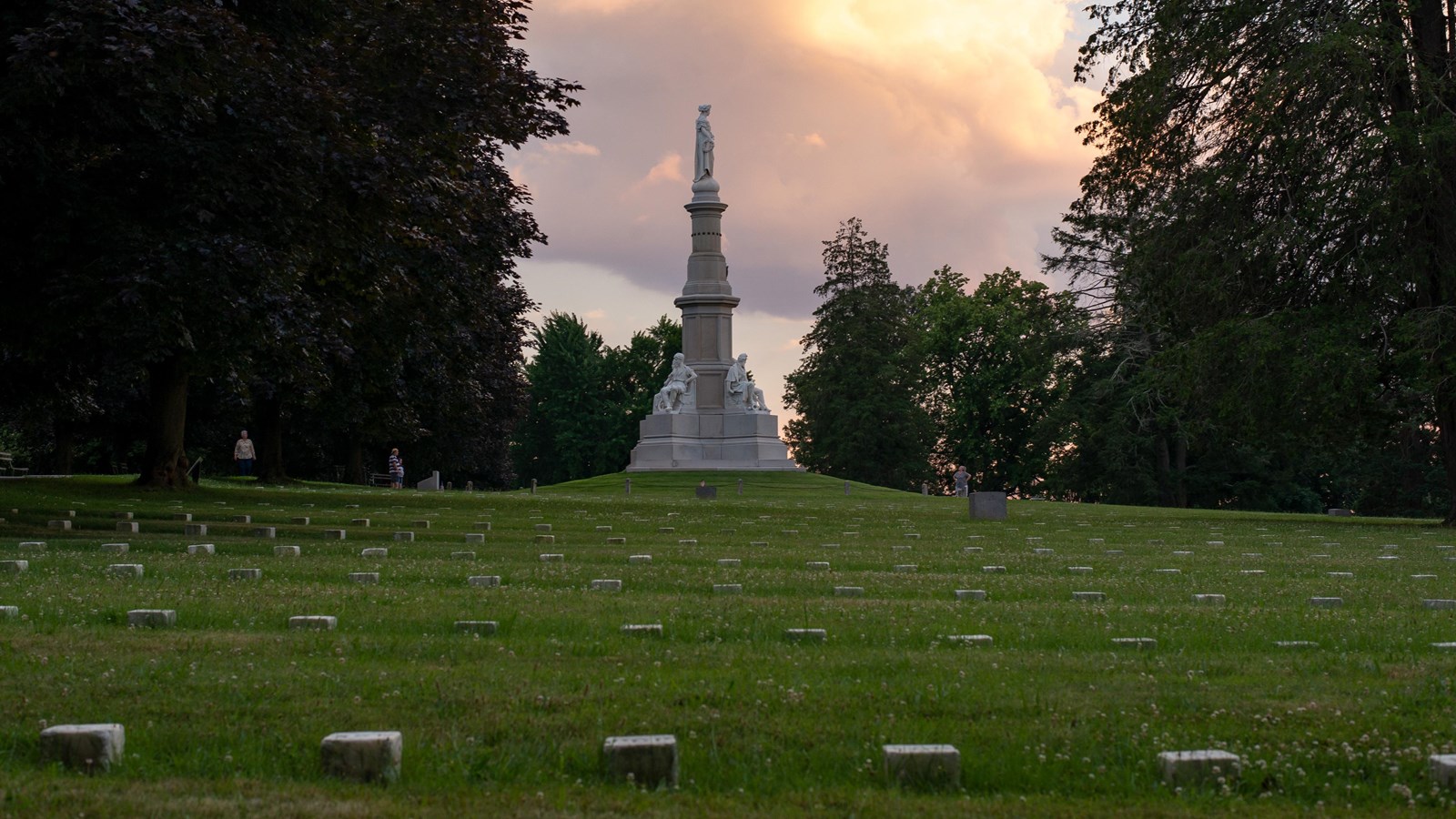Last updated: September 21, 2022
Place
Soldiers' National Cemetery

NPS Photo
Parking - Auto, Parking - Bus/RV
This is the final resting place for more than 3,500 United States soldiers killed at Gettysburg. Lincoln delivered his Gettysburg Address at the cemetery’s dedication on November 19, 1863.
About the Soldiers' National Cemetery
Three days of fighting at Gettysburg took a horrible toll on both armies: roughly 10,000 soldiers killed or mortally wounded, 30,000 injured, and 10,000 captured or missing. After the battle, bodies lay scattered throughout Gettysburg’s farmlands. The dead were hastily buried in shallow graves on the battlefield, crudely identified by pencil writing on wooden boards. As weeks passed rain and wind eroded the impromptu graves. In response, Gettysburg’s citizens called for the creation of a soldiers’ cemetery for the proper burial of the Federal dead. The site chosen encompassed the hill from which the Federal center repulsed Pickett’s Charge during the battle. The reburial process began on October 27, 1863.
Confederate burials did not receive placement in the national cemetery. Efforts in the 1870s by Confederate veterans' societies eventually relocated 3,200 Confederate remains to cemeteries to the South.
A few weeks after the burial process started, a dedication ceremony was held at the yet to be completed Soldiers' National Cemetery. The cemetery committee chose Massachusetts statesman and orator Edward Everett to deliver the main speech. The committee asked President Abraham Lincoln to deliver “a few appropriate remarks.” At the November 19 ceremony, Everett spoke for two hours on the causes of war and the events that led to the Battle of Gettysburg. After his remarks, Lincoln rose and spoke for two minutes; his brief speech today is known as the “Gettysburg Address.” His speech honored the men who fought at Gettysburg and invoked their sacrifice as a cause to continue fighting for the preservation of the United States.
Landscape architect William Saunders designed the cemetery as a wide semi-circle, radiating from a central point to be decorated with a grand monument. The cemetery’s sections were divided by state; smaller states closest to the monument and larger states along the outer portions. Reinterments continued through March 1864. The Soldiers' National Monument, at the center of the circle, was dedicated on July 1, 1869. Numerous other monuments dot the cemetery’s landscape, including a memorial to the soldiers of New York and a monument to President Lincoln.
By 1872, construction of the cemetery was complete, and administration of the national cemetery transferred to the Federal Government.
From the Civil War to Today
Between 1898 and 1968, the government added sections to accommodate the graves of veterans from the Spanish-American War, World Wars I and II, the Korean War, and the Vietnam War. The cemetery’s annex is located due north of the historic original 17-acre property. Today, more than 6,000 veterans lay at rest in the Gettysburg National Cemetery.
Watch the Virtual Tour
Explore the National Cemetery in video through this Virtual Tour.
- Duration:
- 8 minutes, 5 seconds
This was the setting for Lincoln’s Gettysburg Address, delivered at the cemetery’s dedication on November 19, 1863.
